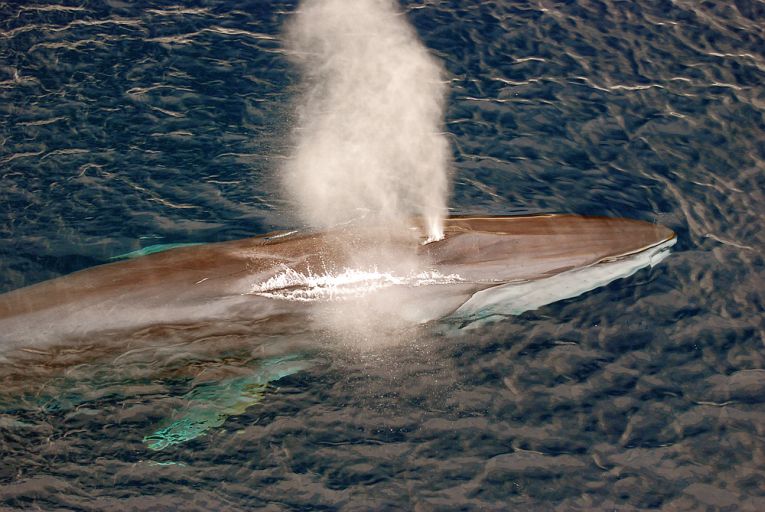Credit: © Shutterstock
Baleen whales need a lot of energy to maintain their bulk. In the Gulf of California, a study has revealed how fin whales forage for large concentrations of krill at the surface of the Pacific. Humpback whales, Megaptera novaeangliae are the only species to be proved to have cooperative feeding patterns. The fin whale, Balaenoptera physalus gathers off the west side of Coronado Island in an area known as the Ballenas Channel. Lunge feeding is the preferred method of collecting the euphasiid shrimps that gather there in daytime. These krill normally migrate deeper in the water column during the day, but the whales take advantage when they appear at the surface in daylight.
In cold and warm seasons, the whales appeared if food was available. These quite low latitudes for the whale are still suitable for the reproduction of Nyctiphanes simplex, a euphasiid shrimp that is a common species of the krill in this region. Their appearance in the Gulf is patchy and sparse, but still enough to encourage the appearance of the whales. They come from far away to reach the rich food source. Distances of 400km travel were recorded. The measure of the productivity of the whole Gulf could be indicated by these whale numbers. Cooler weather seemed to favour the krill production better (in 2004, when numbers were higher.)
73 whales were observed in 2003 and 2004 during 19 sightings. The animals were usually grouped in trios, with individuals and groups of 5 or 6 sometimes seen. Most of the whales could be photo-identified by 2004. The Nyctiphanes were very variable in number, with nets revealing from only 8 individuals to the big catches of 9,394!
The cooperative foraging began with 2-4 whales and then expanded as others joined them for several minutes. 6-9 whales then proceeded to feed from side positions, whereby 2 - 3 would lunge, right-side down, from that lateral position. 2 days within a swarm area was normal, with big krill concentrations lasting 4-5 days. The fin whale hunts krill worldwide and is very unpredictable in its seasonal migrations. Being able to locate them by krill concentration would help marine scientists and others to measure ocean productivity. Also, those remaining at low latitudes in the Mediterranean or in the Gulf of California may constitute unique populations that form genetic units vital for conservation efforts. This paper from the Journal of Mammalogy was written by Paloma Ladron de Gueavara and her colleagues from Centro de Investigacio´n Cientı´ï¬ca y de Educacio´n Superior de Ensenada, in Baja California, Mexico.
For more on whales generally, including a record of 74 fin whales in the North Sea, we have Summer Holiday for Whales and Dolphins here.










